"Setting the Standards for the IT Industry"
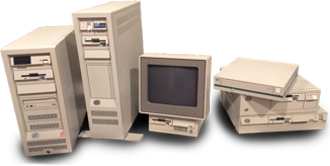
In August 1981, IBM introduced its first microcomputer -the IBM Personal Computer (IBM PC). This launch marked a turning point in computing history, establishing the foundation for the modern PC architecture. Featuring an open hardware design and running Microsoft’s PC-DOS, the IBM PC quickly became the benchmark for compatibility.
By 1984, IBM followed up with the significantly upgraded IBM AT, powered by Intel’s 80286 processor and featuring a new 16-bit AT bus, cementing IBM’s influence in the emerging personal computer market.
![]() International Business Machines Corporation (IBM)
International Business Machines Corporation (IBM)
By the early 1980s, International Business Machines Corporation (IBM) was already a dominant force in enterprise computing, supplying mainframes to large corporations and governments worldwide. Its System/360, introduced in 1965, had revolutionized the industry and led the mainframe market well into the late 1970s.
International Business Machines Corporation innovations include:
- Magnetic tape drives, floppy disk drives, and hard disk drives
- Random Access Memory (RAM)
- The SQL programming language
 IBM Sales Figures
IBM Sales Figures
Table: Early series of IBM Personal Computers (Prices adjusted to inflation -2023)
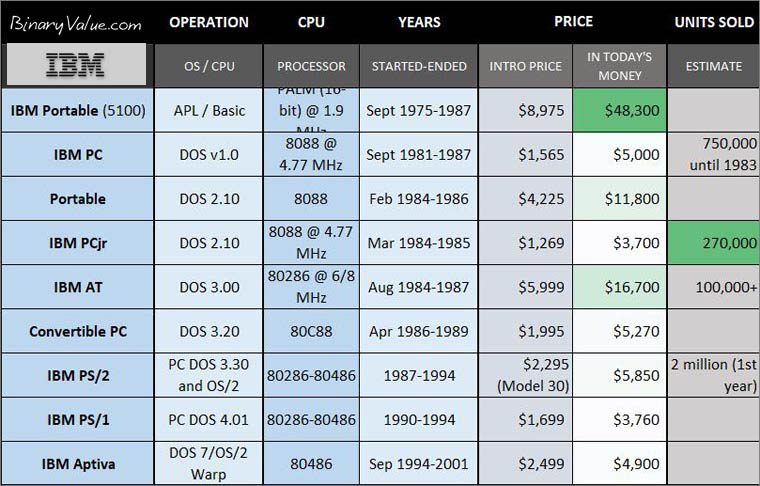
 IBM Personal Computers
IBM Personal Computers
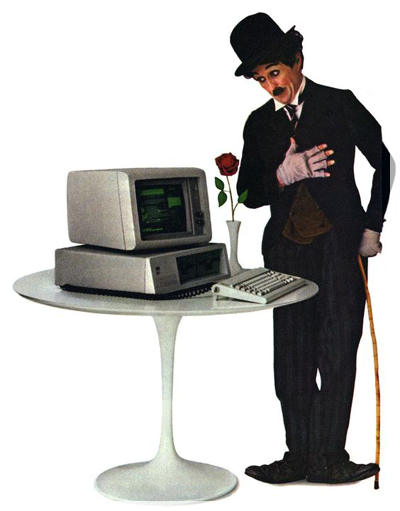 In the early 80s, IBM moved quickly to enter the fast-growing $15 billion personal computing space, projected to grow by 30–40% annually. IBM even considered acquiring Atari, but later decided to create an independent internal team to develop its PC. In just 40 days, IBM engineers designed the motherboard, and within four months, a prototype was operational. The result: over 750,000 IBM PCs sold by 1983, far exceeding expectations. By mid-1982, the first PC clones began to appear—something IBM hadn’t anticipated.
In the early 80s, IBM moved quickly to enter the fast-growing $15 billion personal computing space, projected to grow by 30–40% annually. IBM even considered acquiring Atari, but later decided to create an independent internal team to develop its PC. In just 40 days, IBM engineers designed the motherboard, and within four months, a prototype was operational. The result: over 750,000 IBM PCs sold by 1983, far exceeding expectations. By mid-1982, the first PC clones began to appear—something IBM hadn’t anticipated.
IBM PC Specifications (1981):
-
Price: $1,565 (approx. $4,980 today)
-
CPU: Intel 8088 at 4.77 MHz
-
RAM: 128 KB – 640 KB
-
Graphics: CGA adapter
-
Keyboard: 83-key
-
Storage: 5.25'' FDD (360 KB)
-
Expansion: 8-bit ISA cards
Operating System of the IBM PC
Although IBM considered multiple OS options, it ultimately chose PC-DOS 1.0, developed by Microsoft, as the default operating system for its PC.
-
PC DOS version 1.00

IBM AT (1984 – Model 5170)
In 1987, IBM built a powerful upgrade based on the 16-bit 80286 processor:
- PC-DOS 3.0 with networking support
- Support for MDA, CGA, EGA, and PGA graphics
- Standard 20 MB hard disk
- 1.2 MB 5.25" floppy drive
- 16-bit AT (ISA) bus, backward-compatible
- 512 KB RAM -Up to 16 MB
- Real-time clock and AT-style keyboard
- Optional 80287 math coprocessor
Its popularity drove the clone market, inspiring systems like the Compaq Deskpro, HP Vectra, and Tandy 3000.
» Here is the full review of the BM AT 5170
IBM PCjr (PC JUNIOR 1984-1985)
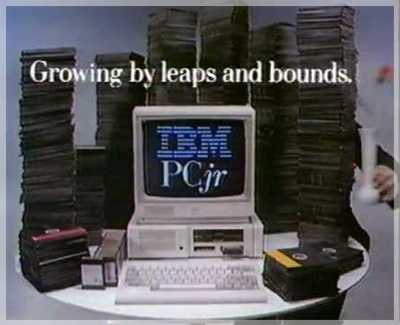 Aimed at home users, the PCjr introduced enhanced multimedia features but limited performance:
Aimed at home users, the PCjr introduced enhanced multimedia features but limited performance:
- Price: $1,269 (about $3,700 today)
- CPU: 8088 @ 4.77 MHz
- RAM: 128 KB
- Storage: 5.25'' (360 KB) floppy drive
- Graphics: 320×200 resolution, 16 colors
- Sound: TI SN76496 chip
- Infrared wireless keyboard, built-in joystick ports
IBM PS/2 (1987)
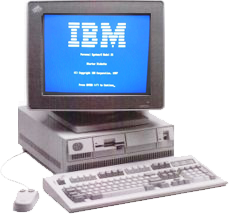 Replacing the PC/XT/AT series, the PS/2 introduced modern features:
Replacing the PC/XT/AT series, the PS/2 introduced modern features:
- CPUs: Intel 80286 to 80486
- Graphics: VGA (640×480, 16 colors; 320×200, 256 colors)
- Storage: 1.44 MB 3.5" floppy (optional)
- Interfaces: PS/2 ports for keyboard and mouse
- OS: PC-DOS 3.3, later OS/2
- Sold 3 million units in 18 months
IBM PS/1 (1990–1994)
IBM's second attempt at a home PC:
- CPU: 80286–80486DX
- RAM: 512 KB–2.5 MB
- Graphics: VGA
- OS: PC-DOS 4.01
- Included modem
- Price: $1,699 (around $3,760 today)
Eventually replaced by the IBM Aptiva series.
 MODERN HARDWARE UPGRADES
MODERN HARDWARE UPGRADES
HARD DISK DRIVE ALTERNATIVES
- XT-IDE Rev 4.1, ISA (BlueLava)
- ISA IDE TO SD Adapter (TEXELEC)
- ISA CF Adapter XT-IDE by RetroLab (ebay)
- XT-IDE Deluxe by BlueLava (ebay)
SUITABLE CF CARDS
- https://forum.vcfed.org/index.php?threads/xtide-device-compatibility-list.73868/
- https://retrocmp.de/hardware/xt-cf-lite/xt-cf-lite.htm
MUSIC & SOUND
■ IBM Personal Computers
BinaryValue.com (c)
Sources: Wikipedia, IBM
![]() > FIND MORE
> FIND MORE
□ MODELS
» IBM PCs
» IBM AT 5170
» Atari PCs
» FM Towns
□ MS-DOS
» MS-DOS Commands (1.0-6.22)







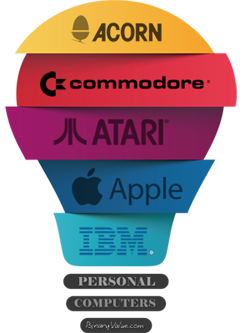


 TOP-10 APPS
TOP-10 APPS